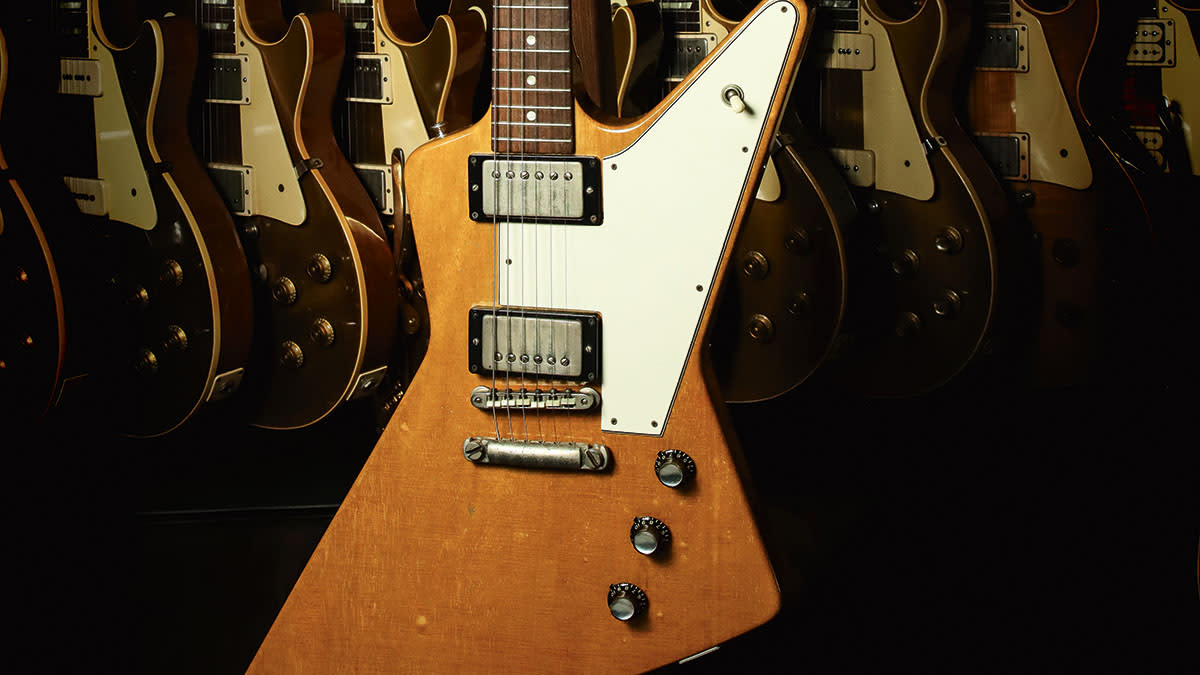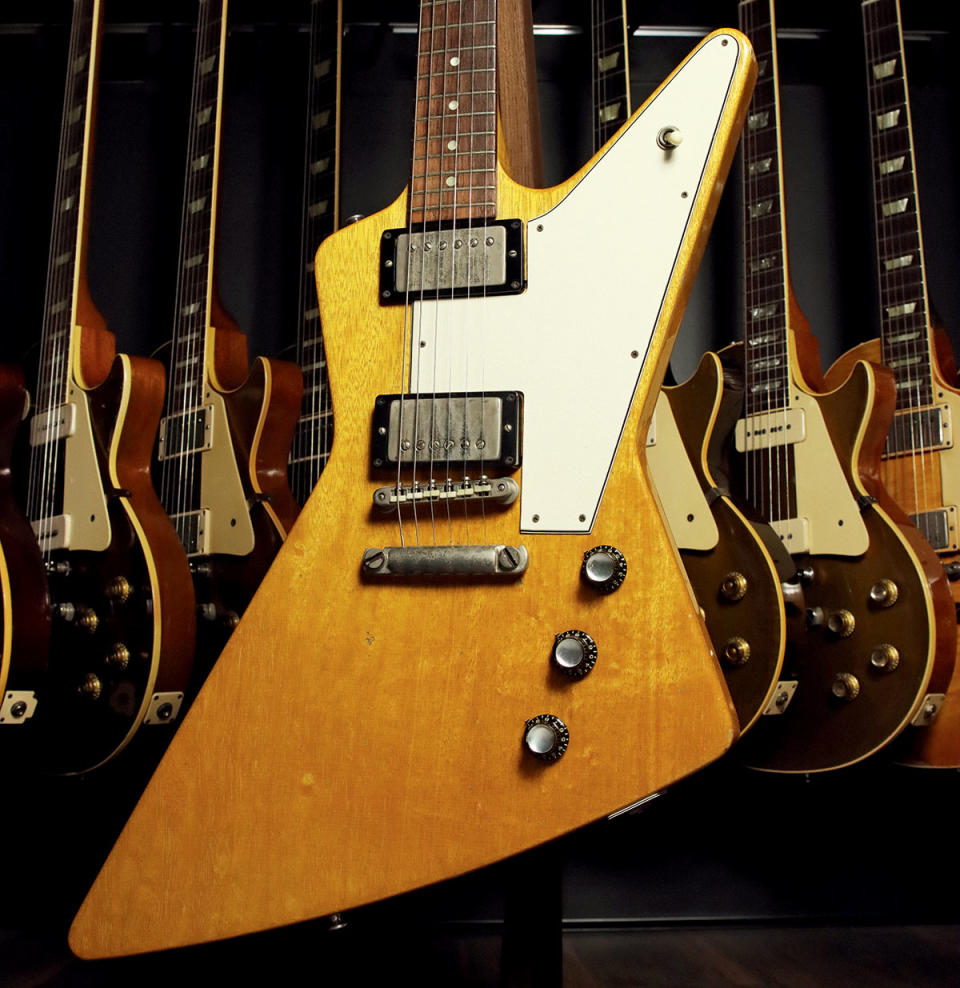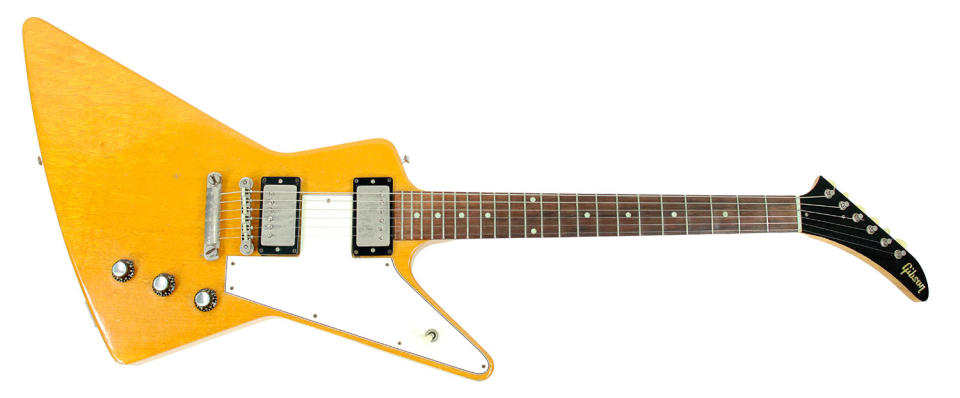How Gibson leaned into the ‘50s modernist zeitgeist and created the Explorer – and changed the shape of electric guitars to come

In 1958, a landmark year for Gibson, the company released a slew of now classic designs. These included the ES-335 and ES-355 semi-hollow thinlines; the EB-2 thinline bass; the revamped sunburst Les Paul Standard; and the double-cutaway Les Paul TV and Junior models.
Also joining the class of ’58 was Gibson’s new “Modernistic” solidbodies, the Flying V and Explorer. There was a third variant designed alongside them, the Moderne, although this guitar never made it into production until 1982.
As these futuristic-sounding model names suggest, Gibson’s intention was to prove to the guitar world that it was able to compete with the likes of Fender when it came to adventurous, forward-thinking designs.
With its new solidbodies, Gibson attempted to slough off its image as a staid guitar builder while leaning into the zeitgeist of '50s sci-fi and space exploration.

Unfortunately, however, both the Flying V and Explorer proved immediately unsuccessful and were discontinued the year after their release. Shipping records show that only 98 Flying Vs were produced between 1958 and 1959, while the Explorer clocked up even fewer. Indeed, the mere 22 recorded shipped between 1958 and 1959 during its debut run make it one of the rarest – and now most coveted – vintage guitars Gibson has ever produced.
Unfortunately, however, both the Flying V and Explorer proved immediately unsuccessful and were discontinued the year after their release
Along with the Flying V and Moderne, the Explorer’s “ornamental design” patent was applied for in June 1957 and granted in January 1958. Originally dubbed the ‘Futura’, it is depicted as having a V-shaped headstock (as present on a prototype guitar during its unveiling at the July 1957 NAMM show) although this was later changed to the more familiar asymmetric ‘scimitar’ headstock shape.
This period was also significant for Gibson on account of its new humbucking pickup design that began to appear on electric guitars from 1957. Subsequently, upon its release, the Explorer was fitted with a pair of PAF (“Patent Applied For”) humbuckers augmented by three control knobs – comprising individual pickup volume knobs along with a master tone – and a three-way selector switch.

Aside from some very early mahogany examples, the Explorer was made using Korina wood (a commercial name given to white limba) as per the Gibson Consolette steel and Skylark lap steel. Durable, good-looking and easy to work, Korina further enhanced the Explorer’s unique appeal. Appearing on the price list under the Modernistic Guitars section, both the Flying V and Explorer listed for $247.50 – the same as a Les Paul Model/Goldtop.
“The forward look,” reads a feature in the April-May 1958 issue of the Gibson Gazette. “The extra narrow, fast action neck is of matching Korina with the Gibson adjustable truss rod. Rosewood fingerboard has attractive pearl dot inlays. Tune-o-matic bridge permits adjustment of string action… Metal parts are gold-plated, individual machine heads with deluxe buttons.”
In the early '60s, Gibson used up the remaining Explorer bodies and necks, hence guitars from this period feature nickel- not gold-plated hardware as per the originals. And although the Explorer is now considered a classic, it wasn’t until 1975 when Gibson started making it again.
The Evolution of the Gibson Explorer
June 1957: Futura patent applied for; V-profile headstock
July 1957: Prototype displayed at NAMM show
1958: Patent granted; ‘scimitar’ headstock; gold-plated hardware; 19 guitars shipped
1959: 3 guitars shipped; discontinued
Late 50s/Early 60s: Korina bodies and necks; nickel-plated hardware
Mid-70s Reintroduced; Ebony, Natural and White finishes
1979: Explorer II; walnut or maple top
1981: Heritage Series Explorer; Korina
1982: The Explorer; Antique Sunburst & Antique Cherry Sunburst finishes
Current: Various models available in Gibson’s Original, Artist, Exclusives and Custom Shop ranges

